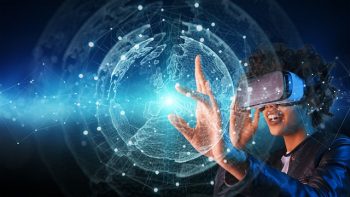
The virtual reality market has seen a surge in growth over the past few years. As the technology continues to improve and more people are getting access to it, more businesses are seeing the value of investing in this space. From gaming to real estate, virtual reality is showing no signs of slowing down. Virtual reality is an immersive computer-generated environment that lets users interact with digital objects using sensors such as cameras and gloves. These digital objects can be anything from virtual buildings or characters to entire locations or games. Since its introduction in the 1980s, virtual reality (VR) has never really taken off. The success of products like Nintendo’s Virtual Boy and high-end PC headsets have kept interest at bay until now.
What Is the Metaverse?
The Metaverse is the collective name for the various digital environments that are connected via the internet (for more go to: https://authena.io/what-is-the-metaverse/). Not limited to VR, the Metaverse includes other technologies like AR/MR, blockchain, AI, and more. Digital objects in the Metaverse can include digital assets like stocks, real-world properties, or digital services like healthcare or education. VR is a subset of the Metaverse that includes both immersive environments and the technology needed to experience them. VR has the ability to create environments that are completely interactive. It has the potential to be incredibly immersive, something that is possible with AR but not as much with MR. VR is becoming increasingly more realistic and immersive, especially when it comes to the quality of the headsets. This is made possible by the increasing processing power of smartphones and computers. VR also requires a lot of data to operate, which is why it is often paired with AR.

What Is VR?
VR is a subset of the Metaverse that is based on the concept of virtual reality. VR is a computer-generated environment that lets users interact with digital objects using sensors such as cameras and gloves. These digital objects can be anything from virtual buildings or characters to entire locations or games. VR is a subset of the Metaverse that is based on the concept of virtual reality. VR is a computer-generated environment that lets users interact with digital objects using sensors such as cameras and gloves. These digital objects can be anything from virtual buildings or characters to entire locations or games. VR is a subset of the Metaverse that is based on the concept of virtual reality. VR is a computer-generated environment that lets users interact with digital objects using sensors such as cameras and gloves. These digital objects can be anything from virtual buildings or characters to entire locations or games.



